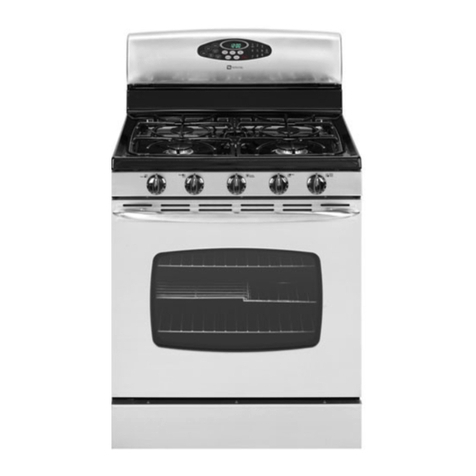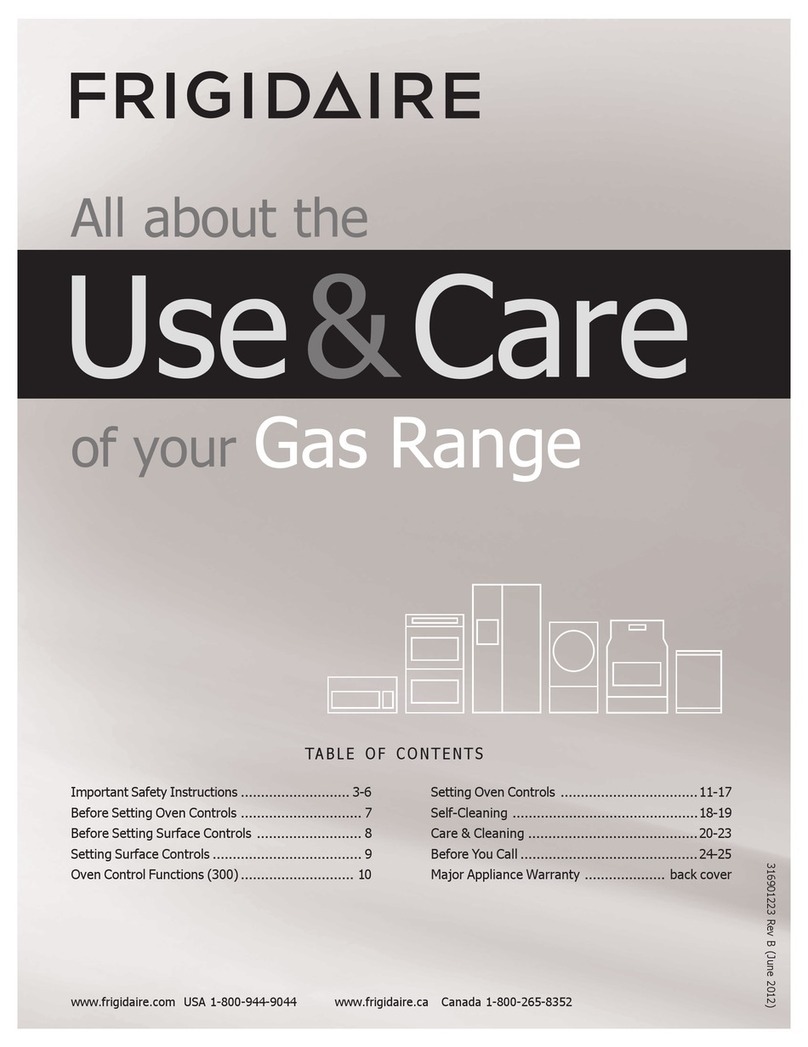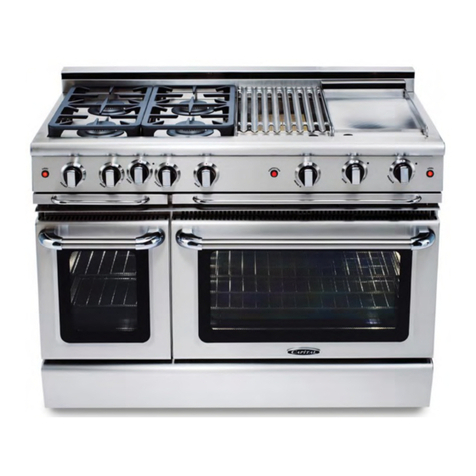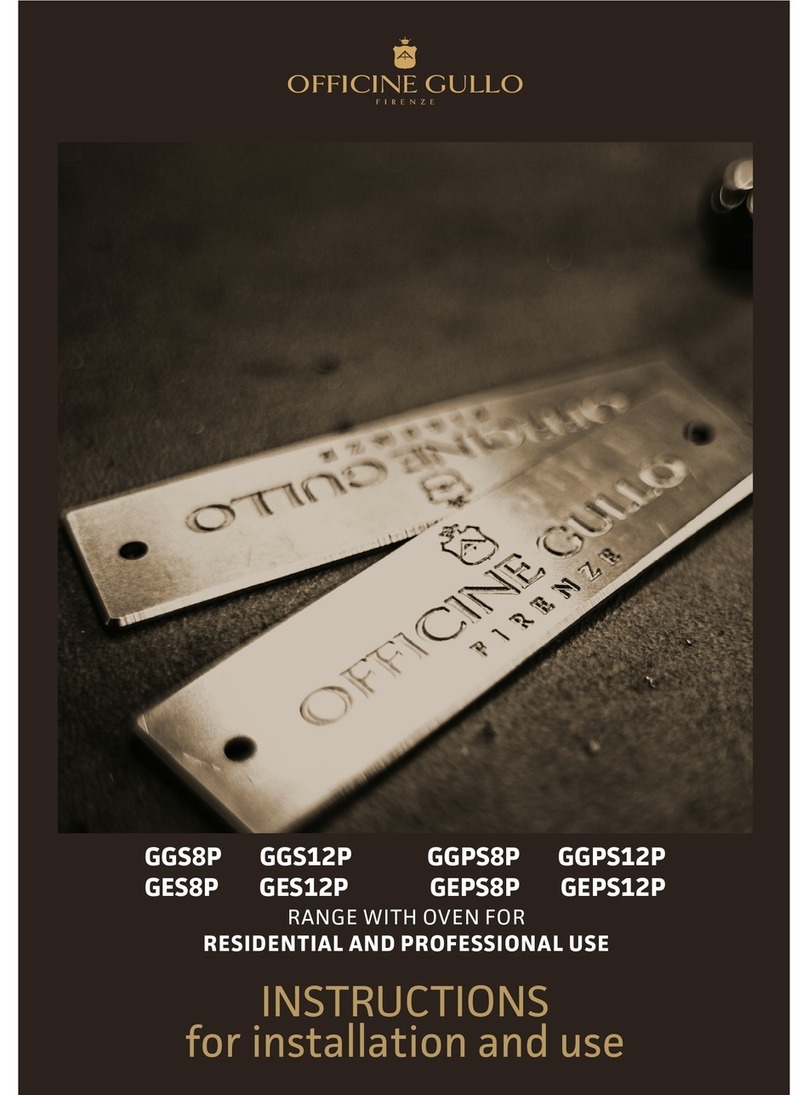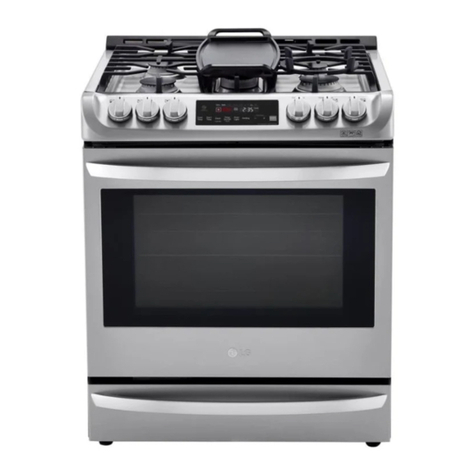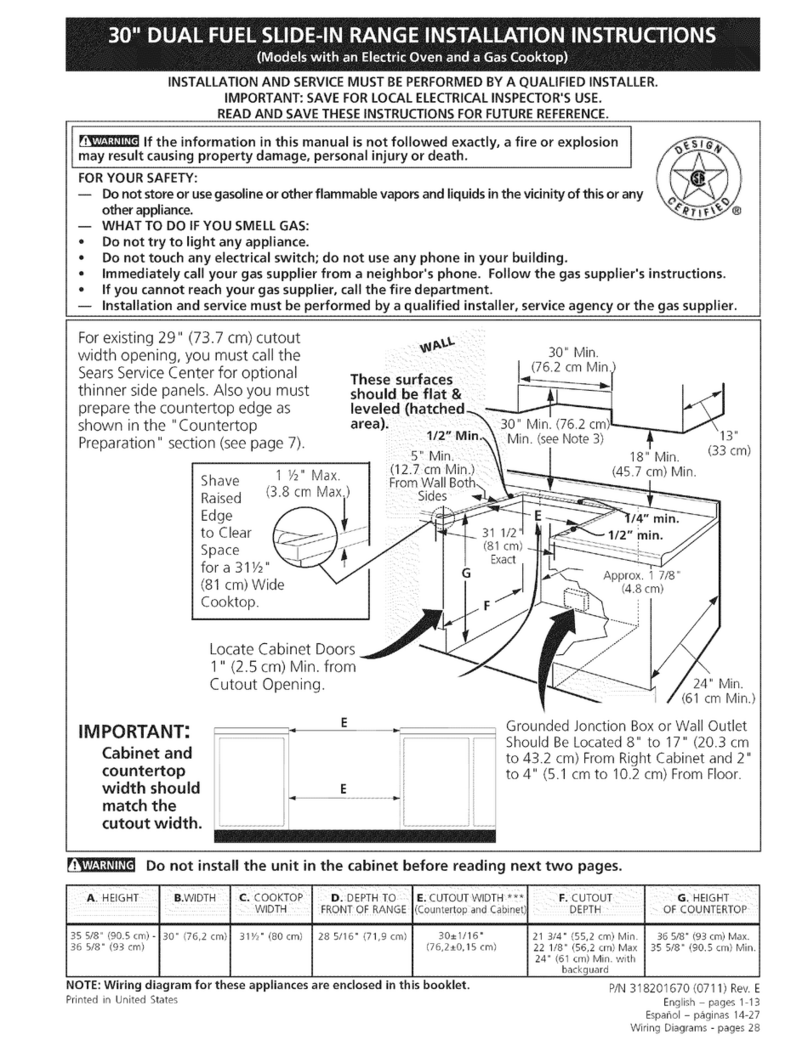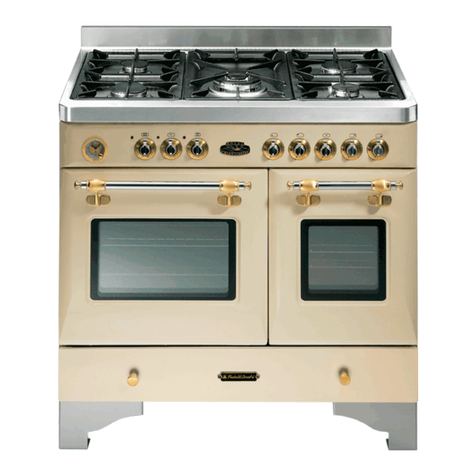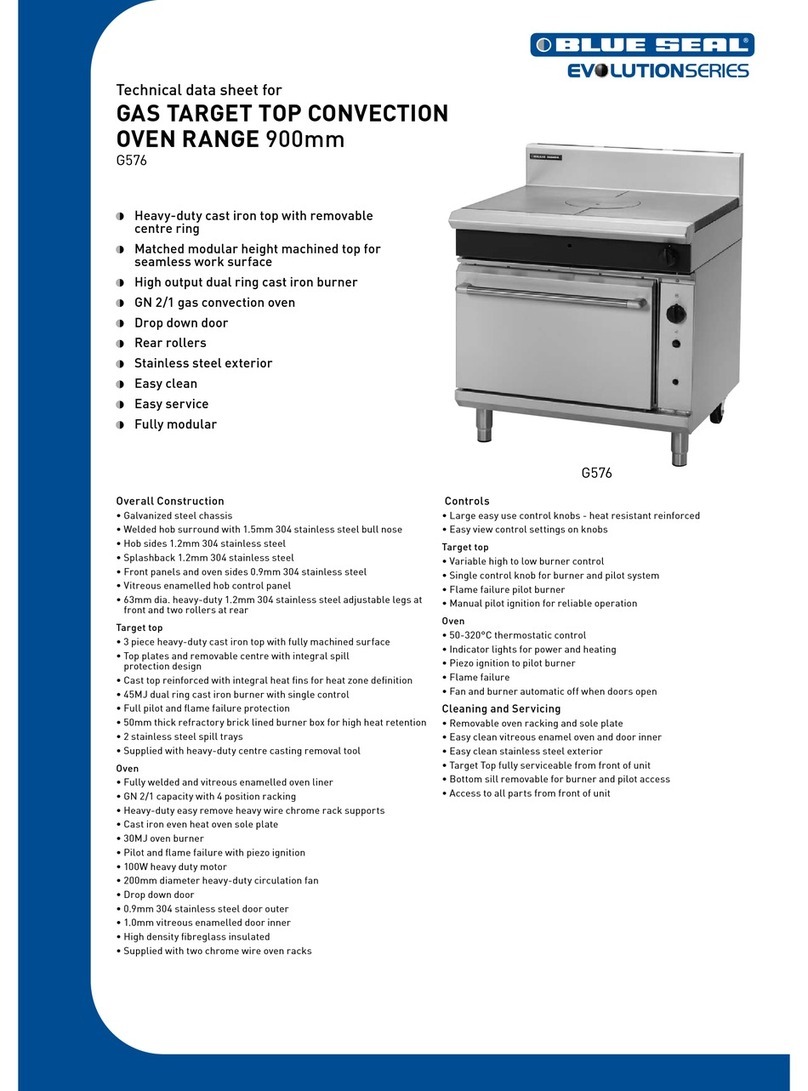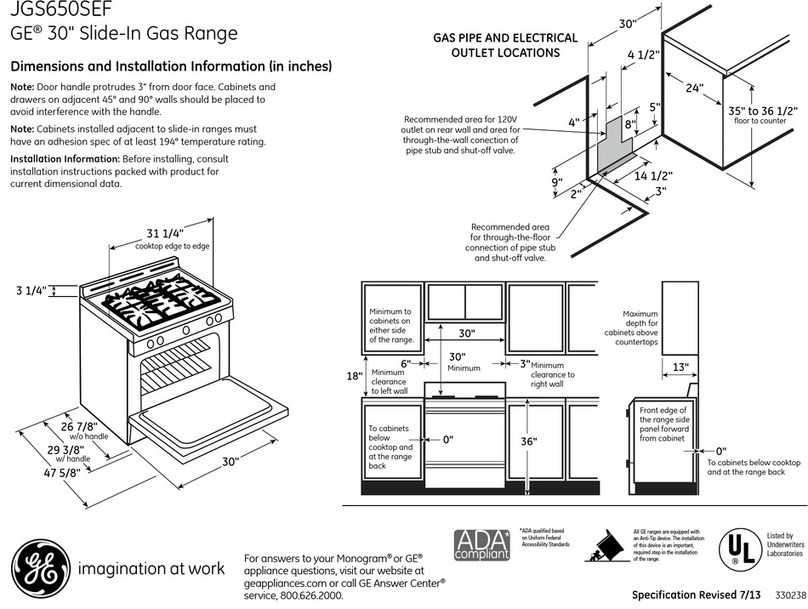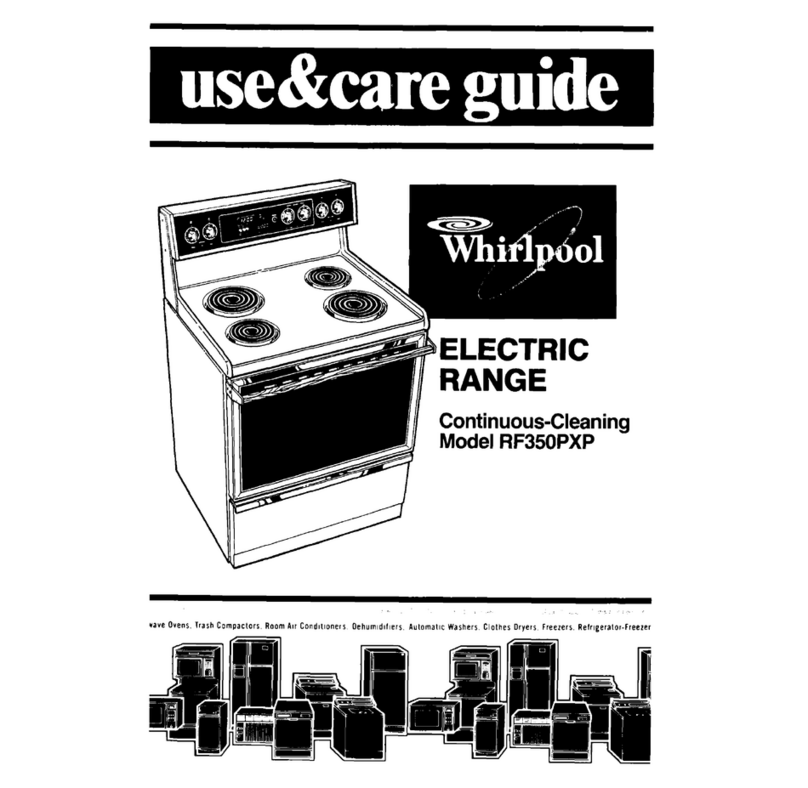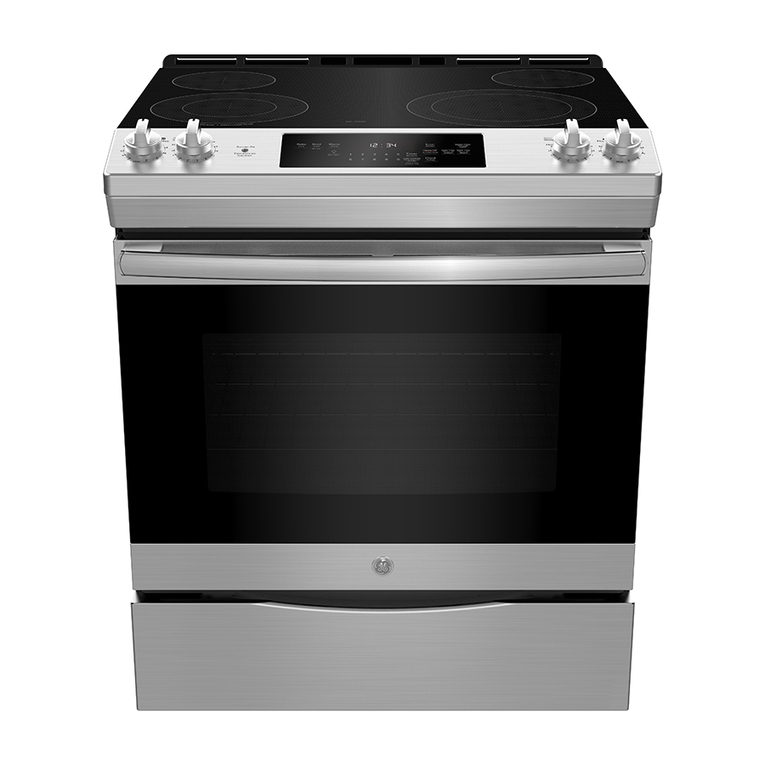7
O erating Instructions Care and Cleaning Installation Instructions Troubleshooting Ti sSafety Instructions
WARNING!
SURFACE COOKING UNITS
Use ro er an size-Avoid ans that are unstable or easily ti ed. Select
cookware having flat bottoms large enough to ro erly contain food and avoid
boilovers and s illovers and large enough to cover burner grate. This will
both save cleaning time and revent hazardous accumulations of food, since
heavy s attering or s illovers left on range can ignite. Use ans with handles
that can be easily gras ed and remain cool.
Always use the LITE osition when igniting
to burners and make sure the burners
have ignited.
Never leave surface burners unattended
at high flame settings. Boil over causes
smoking and greasy s illovers that may
catch on fire.
Adjust the to burner flame size so it does
not extend beyond the edge of teh
cookware. Excessive flame is hazardous.
Use only dry ot holdersmoist or dam ot
holders on hot surfaces may result in burns
from steam. Do not let ot holders come
near o en flames when lifting cookware.
Do not use a towel or other bulky cloth in
lace of a ot holder.
To minimize the ossibility of burns, ignition
of flammable materials and s illage, turn
cookware handles toward the side or back
of the range without extending over
adjacent burners.
Always turn the surface burner to OFF
before removing the cookware.
Carefully watch foods being fried at a high
flame setting.
Never block the vents (air o enings) of the
range. They rovide the air inlet and outlet
that are necessary for the range to o erate
ro erly with correct combustion. Air
o enings are located at the rear of the
cookto , at the to and bottom of the oven,
and at the bottom of the range.
Foods for frying should be as dry as
ossible. Frost and frozen foods or moisture
on fresh foods can cause hot fat to bubble
u and over sides of the an.
Use least ossible amount of fat for effective
shallow or dee -fat frying. Filling the an
too full of fat can cause s illovers when
food is added.
When flaming foods under the hood, turn
the fan on.
If a combination of oils or fats will be used
in frying, stir together before heating or as
fats melt slowly.
Always heat fat slowly, and watch as it
heats.
Use a dee fat thermometer whenever
ossible to revent overheating fat beyond
the smoking oint.
When using glass cookware, make sure it
is designed for to -of-range cooking.
Kee all lastics aways from to burners.
Do not leave lastic items on the cookto ,
they may melt if left too close to the vent.
Do not leave any items on the cookto .
The hot air from the vent may ignite
flammable items and will increase ressure
in closed containers, which may cause
them to burst.
To avoid the ossibility of a burn, always
be certain that the controls for all burners
are at the OFF osition and all grates are
cool before attem ting to remove them.
Should you have a grease fire, turn the fan
off. The fan, if o erating, may s read the
flames.
If range is located near a window, do not
hang long curtains that could blow over
the to burners and create a fire hazard.
Kee range clean and free of accumulations
of grease or s illovers, which may ignite.
Be careful when you clean the cookto
because the area over the cookto will be
hot.
